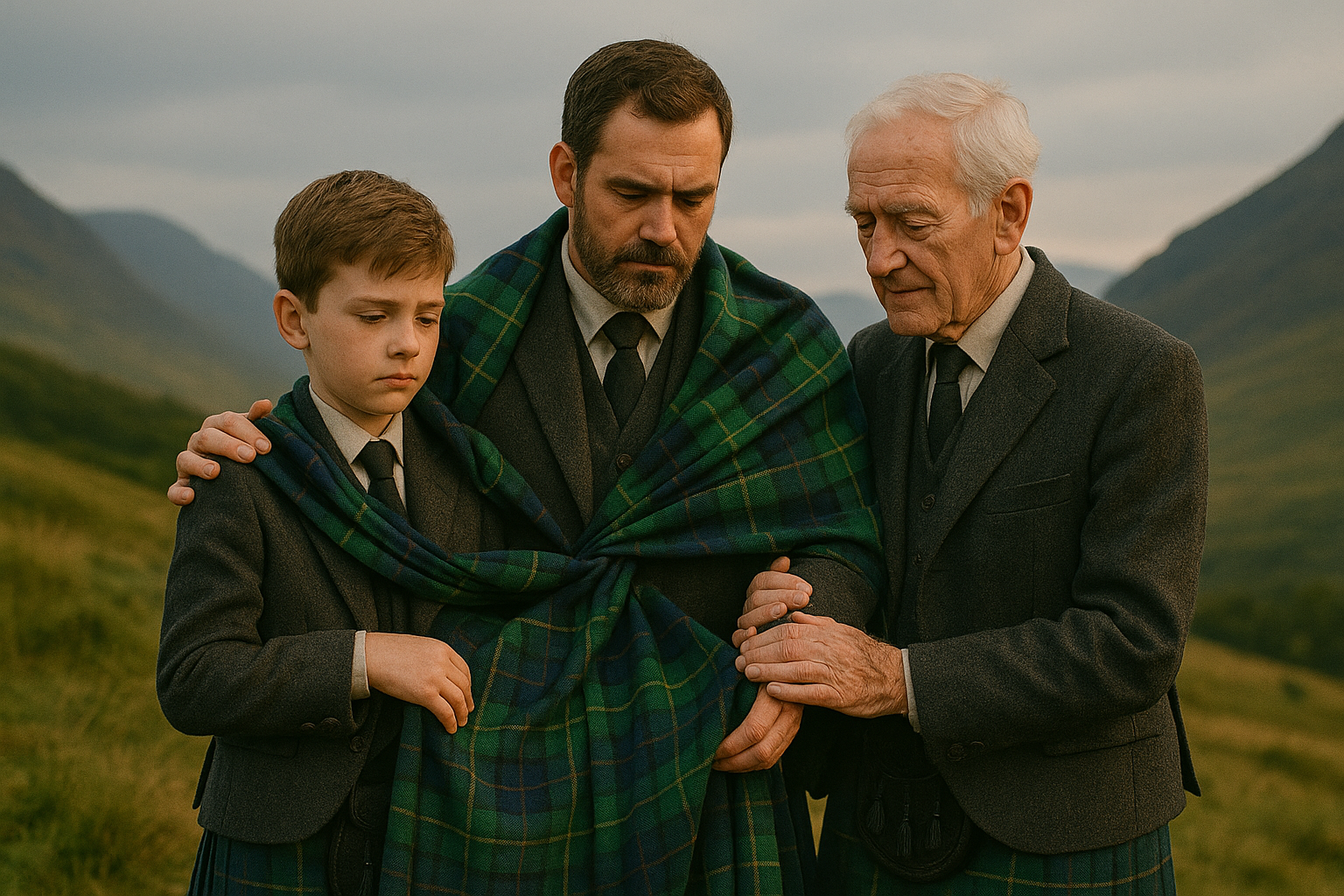Top 10 Reasons to Pass Your Kilt Down Through Generations

Introduction: A Legacy Woven in Wool
The kilt is not just a garment—it is heritage in fabric form. Whether it’s made of ancient tartan, worn at a wedding, or passed through military service, every kilt holds a story that grows richer with time. In Scotland and across its diaspora, passing a kilt from one generation to the next is more than a gesture—it’s a gift of legacy, pride, and identity.
In this in-depth article, we explore the top ten reasons why passing down your kilt isn’t just a traditional practice—it’s an emotional, cultural, and deeply meaningful act that helps shape family identity and historical continuity.
1. A Tangible Connection to Ancestry
Kilts serve as a living connection to those who came before. When a grandchild dons the same kilt their grandfather wore to his wedding or military ceremony, they aren't just dressing up—they are stepping into lineage. This tangible link to ancestry makes the past personal and present.
Heirloom kilts can carry scents, markings, and stitches that act like memory triggers. The kilt becomes an object that doesn’t just remind us of history—it makes history touchable.
2. Reinforcing Clan Identity Across Generations
Each tartan pattern is unique to a clan, family, or region. By passing down a kilt in a specific tartan, families reinforce their connection to that broader heritage. It becomes a subtle but powerful way to say: “This is who we are.”
In an increasingly globalized world, this visible symbol of continuity becomes an emotional anchor, reminding future generations where they come from.
3. Encouraging Cultural Participation for Young Generations
When young people inherit a kilt, they’re more likely to wear it to weddings, Highland games, and clan reunions. The kilt becomes a gateway into Scottish culture—a motivator to learn about family history, tartan design, clan origin stories, and even Gaelic language or Highland dance.
Instead of seeing tradition as distant or irrelevant, they become active participants in something larger and more enduring.
4. Symbolizing Milestones and Personal Growth
Many families pass on kilts during key life transitions: birthdays, graduations, weddings, or coming-of-age moments. These events are emotional markers—and the kilt becomes their ceremonial uniform.
Wearing a family kilt at such a time adds emotional gravity to the occasion. It turns a rite of passage into an affirmation of family and identity.
5. Preserving the Quality and Craftsmanship of a Bygone Era
Older kilts often exhibit craftsmanship that’s hard to replicate today. Hand-pleated, stitched by tailors, and made with high-quality wool, they are artifacts of sartorial excellence.
By passing these down, you’re not only sharing culture but preserving an art form. Each hem, pleat, and pin becomes an education in the beauty of durable, intentional clothing.
6. Fostering Emotional Connection and Family Storytelling
Every kilt has stories stitched into its fabric: a wedding toast, a battlefield farewell, a ceilidh under the stars. When you pass on a kilt, those stories often come with it.
This storytelling fosters deeper relationships between generations. It invites questions, reflections, and often results in oral history being preserved in ways that would otherwise be lost.
7. Creating a Visual Family Legacy
Photos of different generations wearing the same kilt—across decades—create a powerful visual family legacy. Albums or framed prints showing a grandfather, father, and son in the same tartan serve as a moving testament to continuity.
These photos tell a story of lineage more powerfully than words ever could, offering a lasting visual narrative of pride and belonging.
8. Instilling Pride and Responsibility
Handing down a kilt carries symbolic weight. It tells the next generation: “I trust you with this. You are now a bearer of our story.”
This symbolic transfer can have a deep emotional impact. It nurtures pride in identity and a sense of duty to protect and respect family tradition.
9. Making Sustainable, Meaningful Fashion Choices
In today’s throwaway fashion culture, passing on a kilt teaches a valuable lesson in sustainability. Rather than buying something new, inheriting a kilt is a green, meaningful alternative—and one with a far greater story to tell.
These garments avoid the landfill and become part of a legacy instead.
10. Affirming That Heritage Is Meant to Be Worn
A kilt isn’t a relic to be boxed away—it’s meant to be lived in. Passing down a kilt affirms that tradition is not static, but dynamic. That identity is not hidden, but worn proudly.
Each time the kilt is worn—whether at a wedding, a ceilidh, or simply a family dinner—it becomes more than a garment. It becomes an ongoing story, moving from one life chapter to the next.
Conclusion: A Gift That Lasts Generations
Passing down your kilt isn’t just a gesture of sentiment. It’s an act of cultural preservation, personal empowerment, and deep familial connection. In every hem and pleat, there are stories waiting to be retold, identities waiting to be affirmed, and futures waiting to be stitched.
So when the time comes to hand it over, know that you’re not just giving away a piece of clothing—you’re passing on a legacy that lives as long as it is worn.
- Art
- Causes
- Crafts
- Dance
- Drinks
- Film
- Fitness
- Food
- Games
- Gardening
- Health
- Home
- Literature
- Music
- Networking
- Other
- Party
- Religion
- Shopping
- Sports
- Theater
- Wellness


